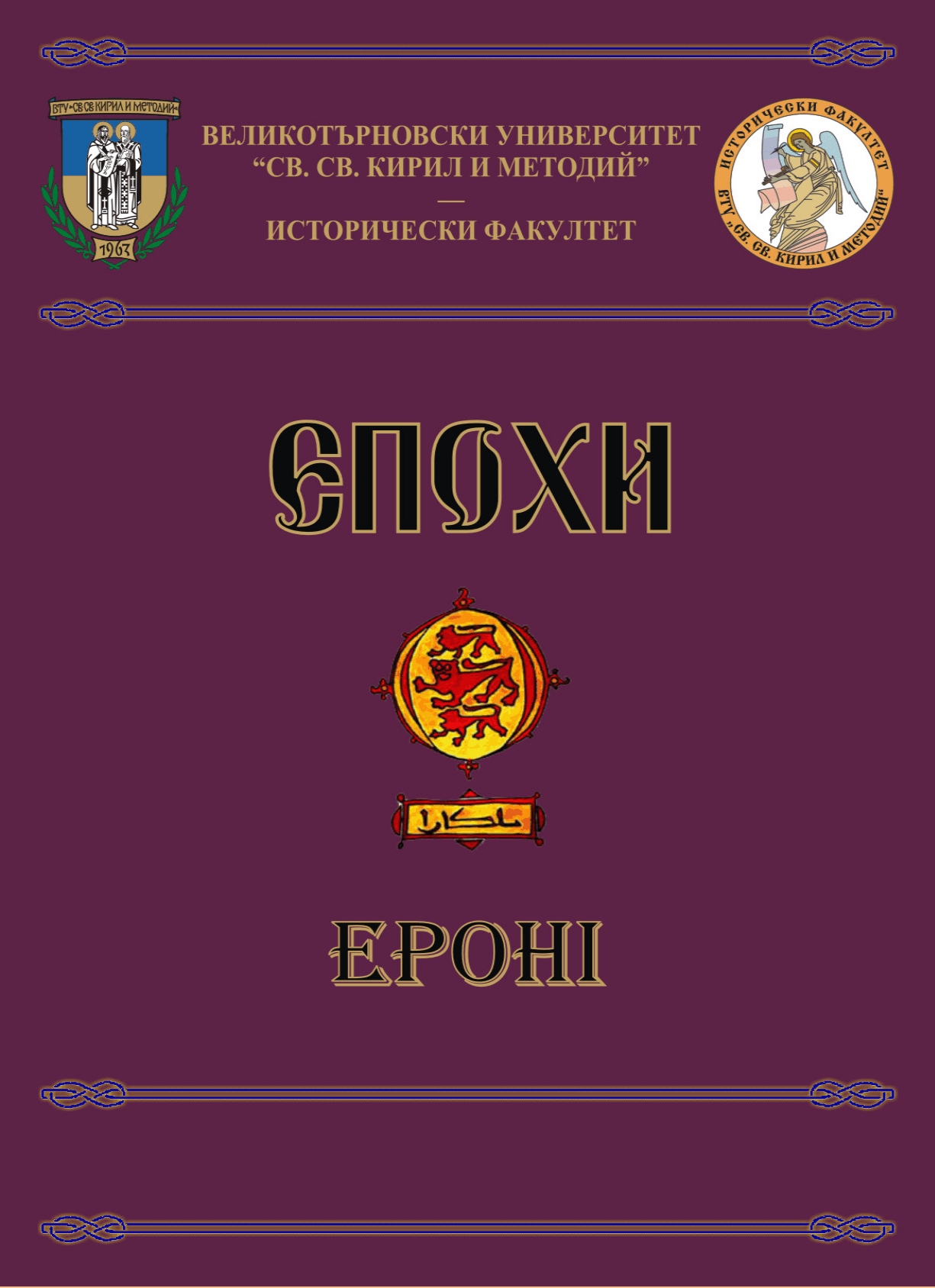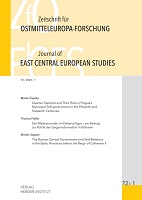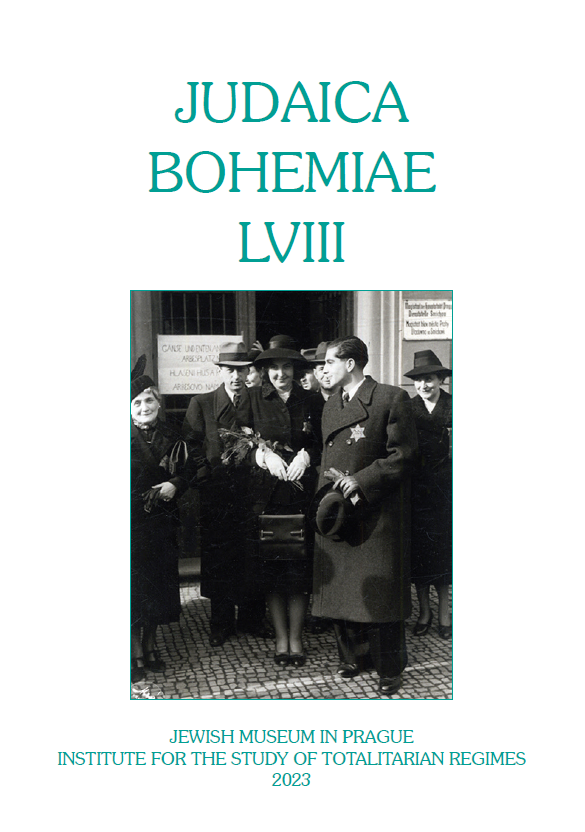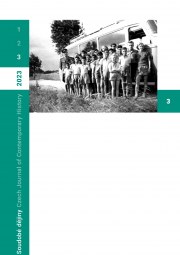
We kindly inform you that, as long as the subject affiliation of our 300.000+ articles is in progress, you might get unsufficient or no results on your third level or second level search. In this case, please broaden your search criteria.




The literary opus of the Bosnian Franciscans is interesting in many ways from the imagological point of view: both concerning self-perceptions and hetero-perceptions, which were constructed based on the importance of religion as an element of community identity. Analyzing the imagotype potential of religious and ethnic divisions, the paper reconstructs the controversies between Christianity and Judaism, as well as linguistic elements, folk customs, and contemporary reality. At the source of the Bosnian Franciscan literature, at the beginning of the 17th century, we find Divković, who, as is often the case in pre-modern culture, relates the religious Other to the ethnic Other. This tradition is continued by the 19th century’s Franciscan chroniclers (Lastrić, Benić, and Bogdanović), while Martić, Jukić, and Knežević, who stepped into the era of the rebirth of Croatian Illyrianism, we can trace various normative implications of the relationship between political, ethnic, racial and religious identity. Since the Bosnian Franciscans of that time, we remember the ecclesiastical and intellectual elite among the Catholic population in Bosnia, the imagotypical statements about Jews in their works reflect both the Christian heritage through history and the Eurocentric view of the Others. Therefore, reconstructing the Bosnian Franciscans’ perceptions and ideas about the Other and the Different is, at the same time, reconstructing the genesis of the narrative about the Other, i.e., social and religious stereotypes and prejudices, as well as the continuity of talking about oneself by talking about the Different.
More...
Review of: Polish Jews in the Soviet Union (1939–1959). History and Memory of Deportation, Exile, and Survival. Hrsg. von Katharina Friedla und Markus Nesselrodt. Academic Studies Press. Boston 2021. XXIX, 319 S. ISBN 978-1-64469-749-8. ($ 139,–.)
More...
The studies on Polish francophone literature put an emphasis on a selected group of authors (Potocki, Mickiewicz, Krasiński) and on some literary genres (diary and travelogue). The aim of this paper is to study the work of a lesser-known feminine writer, Anna Nakwaska, member of cosmopolitan literary milieu and author of several short stories and novels, written in French. Applying selected concepts of spatial literary studies, the first part of the article proposes to perceive the publishing strategies of Nakwaska as a tool for introducing Polish feminine literature in a broader European context. In the second place, the study of some Nakwaska’s short stories show her interest for a literary presentation of several geographical problems, including demography (put in the context of antisemitism) and regional ecology. The use of Polish toponymy brings a foreignization of the francophone fiction.
More...
Polen-Jugendverwahrlager der Sicherheitspolizei in Litzmannstadt commonly referred to as the camp on Przemysłowa Street in Łódź, in operation between December 1942 and 19 January 1945 was a very special place. This is because it was the only place where exclusively children were held under conditions comparable to concentration camps. The article takes a closer look at the reality that minor prisoners had to face and the history of this cruel place. The most important theme, however, is the post-war reckoning with the history of the camp, mainly in the form of trials of child abusers. We also learn how the history of the camp was manipulated in the post-war era to achieve the desired propaganda effect and how its history and victims were being exploited. The author is highly critical of the content of the only monograph on the camp by Józef Witkowski and describes in detail the notorious court case of Eugenia Pol from 1970–1976. She was then sentenced to 25 years in prison. To this day, it is difficult to determine whether the camp supervisor was in fact a ruthless torturer or a victim of a judicial crime. Without settling the issue definitively, the author presents how the unreliable conduct of Eugenia Pol’s trial today hinders the search for the truth and is a pretext for further misrepresentations and manipulations.
More...
A high level of anti-semitism in the newly revived Polish state had to be taken into account by the Soviet diplomacy in the first half of the 1920s. The disclosed documents from the correspondence between the Plenipotentiary representative of the USSR in Warsaw with the central office of the People’s Commissariat of Foreign Affairs introduced into the scholarship for the first time testify to the existence of a Jewish problem in Polish-Soviet relations. Moscow had to keep track of the number of Jews in the diplomatic mission in Warsaw as well as to consider the request of Polish officials, including the Polish leader Jozef Pilsudski, about the desirability of appointing a person of Russian origin the head of the mission in Warsaw given the level of anti-semitism in the Polish society. The deputies of the Polish Sejm at a meeting of the Foreign Affairs Committee attributed the shortcomings in the Polish-Soviet negotiations to the Jewish nationality of the representative of the USSR. Another problem in Polish-Soviet relations in 1923 was represented by the destiny of Jews who escaped through Poland from Soviet Russia and Soviet Ukraine to the United States. After the introduction of immigration quotas in the USA in 1921 about 6 to 8 thousand Jews were not able to receive entry visas in the United States in 1923. The Polish government required their urgent deportation. Other countries did not want to see them on their territory either. The Jewish organization “Joint” was forced to ask Moscow to approve of their repatriation to the USSR on condition it took charge of covering all expenses. After some hesitation, the USSR agreed with such repatriation. However, it was not organized in a civilized way. The Polish authorities simply ordered to drive Jews to the borders with the USSR. It meant the spontaneous transfer across the border which caused a new scandal in the already strained Polish-Soviet relations.
More...
The point of departure of the presented text is a polemic with Adam Leszczyński’s Facebook entry condemning the inclusion of a photograph showing a mask of a Jew among a group of carollers (supposedly without a commentary), featured at the Ethnographic Museum in Cracow. In her reply the author of the text, simultaneously one of the Museum curators, not only explains the intention of including this particular depiction into museum space but also reconstructs the entire complex context and history of the motif of the Jew mask among the carollers. At the same time, she poses a question about the role played by an ethnographic museum and the limits of publicistic commentary (and associated abuse)."I found masks showing Jews and Gypsies, present in assorted caroller groups, disturbing. Upon numerous occasions I was asked why do we show such caricatures? What about the feelings of Jewish and Romani visitors, facing such depictions of themselves and asking: is this my museum, a museum about me?How did the Jew character find himself among carollers? Did this take place when older carol singing became linked with the Church ritual theatre? How did the Jew-rabbi appear amidst the canon of carollers (together with King Herod) or the Jew Trader among those singing together with the turoń? Perhaps this is a distant trace of the commedia dell-arte, an echo of the Pantaloon (Venetian trader) dramatis persona and the Servants? Or is the reason entirely different? It is worthwhile to exploit the opportunity provided by the omittance of the commentary on the part of a recognised journalist and historian, as well as his propagation of false information about its absence. The crux of the matter is, after all, the existence of a mask portraying a Jew as pars pro toto of the entire permanent ethnographic exhibition. This is not the first time when the nature of this object, i.e. the disguise and hence the disclosure of exiting but concealed contests, makes itself known. The context of the ethnographic museum constitutes an excellent backdrop for such reflections”.
More...
This article examines the role Antisemitism had on the decision of Salonican Jews to migrate from Salonica to the Habsburg Empire and its successor states. The period under examina-tion extends from 1867, when the December Constitution was proclaimed and equal politi-cal rights were given to the Jews in the Habsburg Empire, until 1938 and the Anschluss. The article examines how Antisemitism influenced the decision of people to leave Salonica and choose these states to settle in. It argues that, despite contemporary views about Antisem-itism in the Austrian lands during the imperial and interwar period, the perception of it among the Jewry in Salonica was quite different. The application of Critical Discourse Anal-ysis on two major Jewish newspapers demonstrates that Antisemitism was considered to be relatively marginal as a phenomenon, especially in comparison to other countries, such as France. While taking into account the significant events of the some seven decades in ques-tion, most notably the transition from empires to nation states, the article argues that it was the continuity of links between the persons under examination and the specific places that impacted their decisions, even during the interwar period. Moreover, and in line with recent research examining the impact of Antisemitism on the decisions of Salonica Jews to migrate elsewhere, the article argues that Antisemitism was not a push factor leading people to leave Salonica, as the main reasons for this choice were the potential financial opportunities in the Habsburg lands and the political upheaval in Salonica. However, as is demonstrated, Anti-semitism functioned as a pull factor towards Austria-Hungary and, in particular, towards Moravia, where the majority of the Salonica Jews were to be found. The article aims to offer an account on the migration of Salonica Jews to the Habsburg Empire and its successor states, while also addressing the issue of Antisemitism in both the countries of origin and the destination, thus offering new insights on both major research topics.
More...
This paper explores one of the most influential conspiracy theories of all time, as described in the Protocols of the Elders of Zion, by employing the method of structural analysis. The “master myth” of the Protocols represents a basic structure of the conspiracy narrative, whose motifs were subsequently modified throughout the 20th and 21st centuries according to current events and moods. However, to understand the pamphlet as a whole, it is also important to shed a little light on its specific historical context and the religious, political, and social fervour of the time, which eventually gave rise to this text. The text is one we can still consider a blueprint of contemporary conspiracy narratives about the global cabal that occupies a prominent place within the modern conspiracy culture.
More...
The article is devoted to Oleksandr Kozyr-Zirka, one of the most famous atamans of the period of the Ukrainian national revolution 1917–1921. In November 1918, he joined the uprising against Hetman Paweł Skoropadski. After the overthrow of the Hetmanate, he became famous mainly for the robberies in the rear of Ukrainian Army and the pogroms in Owrucz at the turn of 1918 and 1919. His fate inspired Mikhail Bulgakov to create the character of the bloody ataman KozyrLashka, one of the side characters of the novel „The White Guard”.
More...
The article examines the activity of the Bulgarian Youth Union “Father Paisiy” (BMSOP), its goals and ideology, as well as its role and place in the political life of Bulgaria in the 1940s, based on documents of the union from the period 1942–1943 – a relatively calm and successful period of development of BMSOP. The selected sources reveal the attitude of the organization to the personality and work of Tsar Boris III and to the Jewish question (and disavowal of Metropolitan Stefan of Sofia). They contain rich information about the BMSOP’s idea of organizing and conducting national propaganda, as well as about the organization’s actions in infiltrating the existing organizational structures in the country, its work in schools.
More...
After 22 June 1941, the German occupier launched an anti-communist propaganda campaign on the Polish lands. The tool for its implementation became, among others, brochures written in Polish, portraying the Soviet Union as a country threatening European civilisation and wishing to destroy Polishness. For this reason, much space was devoted to the Soviet-occupied eastern Polish areas, showing the brutality of everyday life under Soviet rule.
More...
The ambivalent attitude of socialist memory politics towards the Holocaust during János Kádár’s regime (1956–1989) is reflected in the history of personal collections. Although museums did collect Holocaust memorabilia, this was not encouraged or publicised. Because of such delayed and restrained collection, the objects relating to persecution are mostly to be found in family homes. Since the end of socialism did not change this attitude, the contemporary memorial landscape of the Holocaust covers not only the institutions dedicated to the history of persecution but also the (second- and third-generation) survivors’ homes. On the other hand, the public collection of the victims’ documents – albeit in an incomplete, unprofessional, and politically motivated manner – had already been established during the Kádár era, and within the framework of a non-Jewish, party organisation. In this paper, we will attempt to describe the activity of the Committee for Persons Persecuted by the Nazis (Ná-cizmus Üldözötteinek Bizottsága, NÜB), the first organisation to specifically collect Holocaust memorabilia. Through examples, we will show the extent to which privately owned personal material traces contributed to the building of public collections in the post-communist period. The study particularly focusses on the collecting strategies and practices of the post-1990 Hungarian Auschwitz Foundation (Magyar Auschwitz Alapítvány) and the state-run Holocaust Memorial Center (Holokauszt Emlékközpont, HE), thus completing the institutionalisation process of Holocaust-related materials. We argue that the post-war era’s memory politics and memory processes, mainly in the 1960s and 1980s, influenced both the biography of the objects and the histories of the world around them. Therefore, through the stories of the objects, we can better understand the relationship between institutional and personal memory. We seek to answer the question of what happened to the tangible heritage of the Holocaust during the Kádár era and how the survivors related to their preserved objects in the 2010s.
More...
This study elaborates on relations between the Czech Catholic Church and the Jews in 1938–1942. Against the background of global Church history, it focuses on various standpoints and forms of aid shown to the Jews and Jewish converts especially during the Protectorate of Bohemia and Moravia. It also explores the manifestations of anti-Semitism in the Church. Using specific examples, it describes cooperation between the clergy and laymen in the salvation of Jews and Jewish converts, ranging from various interventions on the part of Catholic Church representatives and the issue of false and backdated baptism certificates to the assistance given by the St. Raphael Association, an international Catholic association, in helping them to move to safe countries.
More...
This article examines how Jews and their families sought reprieve from persecution by contesting their own or their children’s paternity in the Nazi Protectorate. The study’s three cases concern people, defined as “non-Aryan”, meaning Jewish or part-Jewish, according to Nazi racial laws, who pursued formal, legal challenges to their own or their children’s racial status. While the Czech and German civil courts resolved some cases quickly, others dragged on for years. Most importantly, “pending” cases delayed deportation for the individuals whose status was in question. Using a micro-historical lens on the legal process, this article shows how the persecuted exercised agency and how local non-Jews assisted or hampered their struggle to mitigate persecution and escape deportation.
More...
This study focuses on the activities of a special department at the Police Headquarters Prague (PHP), later an independent commissariat, which was responsible for “Jewish” affairs between 1939 and 1945. It describes the circumstances surrounding the establishment of this department, as well as its staffing, activities, and the powers of specific officials with regard to the development of anti-Jewish policy in the Protectorate of Bohemia and Moravia. On the basis of several concrete cases of anti-Jewish persecution, it details the methods used by this department and by its individual officials. Attention is also paid to the department’s specific procedures that were developed in co-operation with the various departments of the Prague Gestapo. It also reflects on the fates of specific officials from the PHP’s “Jewish department” after the end of the war, focusing on the manner and extent of their punishment by the post-war Czechoslovak judiciary.
More...
A.C. Cuza was a prominent antisemite politician. In the latter half of the interwar period, he realized that his movement could become more influent in the new context, after Adolf Hitler’s advent to power, when other countries also resorted to dictatorial or totalitarian regimes. He tried to use his presence in the Romanian Parliament as a springboard to gain votes and to convince the constitutional factor, King Carol II, that he was leading a popular movement and could be entrusted with government. However, he remained the same mono-thematic antisemite, incapable to come up with something new, including in antisemitism. He was not capable to propose a more complex understanding of the Romanian society’s problems and, as a consequence, was surpassed in influence by the Iron Guard.
More...
Review of: SEDLICKÁ, Magdalena: „Není přítel jako přítel“: Židé v národním státě Čechů a Slováků 1945–1948. Praha, Academia – Masarykův ústav a Archiv AV ČR, v. v. i., 2021, 225 pages, ISBN 978-80-200-3307-9 and 978-80-88304-58-6.
More...